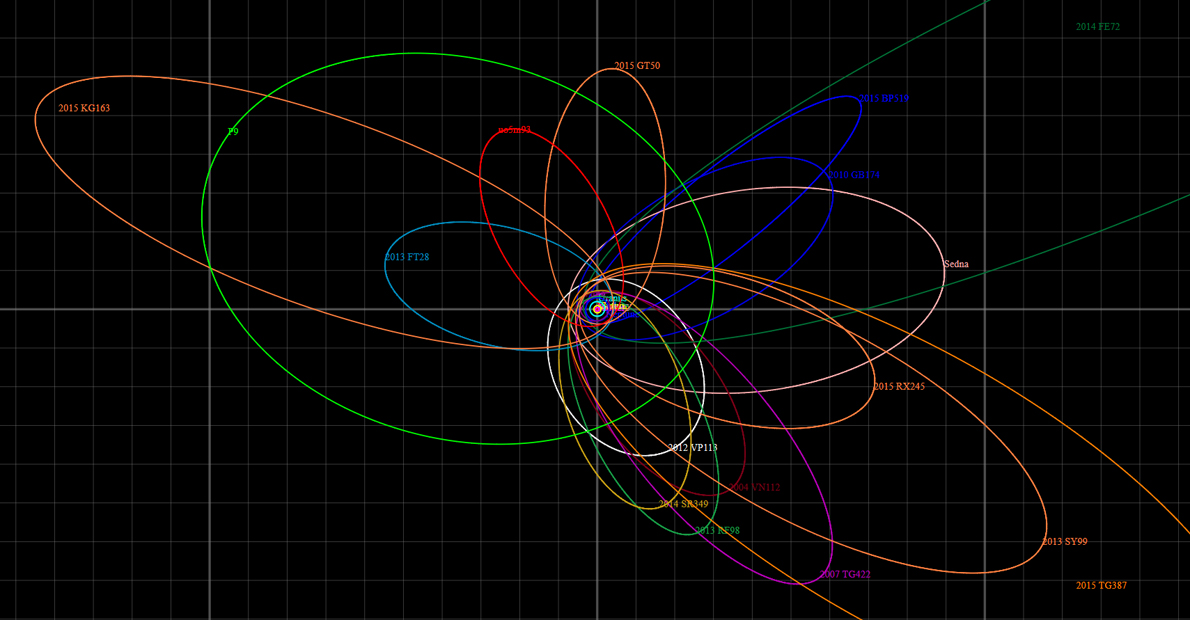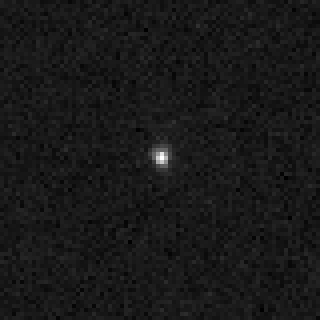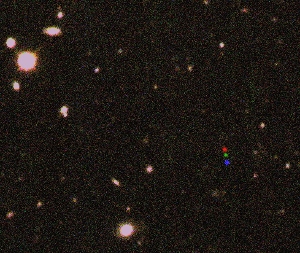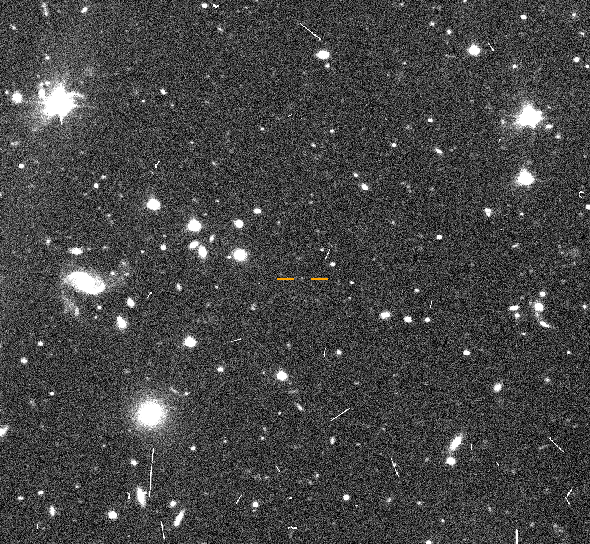
It essentially goes without saying that our knowledge of all regions of the solar system has grown enormously during the past few decades. What we might call the “outer solar system,” i.e., beyond Neptune, is a region where our knowledge has perhaps grown the most, since until quite recently we knew almost nothing about this part of our solar system. We knew that long-period comets pass through this region, fed in from the Oort Cloud at the extreme outer part of the solar system – and a population which has never been directly detected – and then there is the Kuiper Belt, something similar to which was first proposed in the mid-20th Century but, with the exception of Pluto, was not directly detected until the early 1990s. (The story of this was recounted in a previous “Special Topics” presentation.) As for what we might call the “far outer solar system,” i.e., the region around a heliocentric distance of 100 AU and beyond, some of the “scattered disk” Kuiper Belt objects travel in this region for a significant part of their orbital journeys, but with the exception of them and the long-period comets passing through, this had essentially been a celestial “no man’s land” as far as our knowledge was concerned.
The first-known permanent resident of this part of the solar system was discovered on November 14, 2003, by Michael Brown, Chad Trujillo, and David Rabinowitz utilizing the 1.2-meter Schmidt telescope at Palomar Observatory in California. The object, near 21st magnitude at the time, has since been found to have been located at a heliocentric distance of 89.6 AU. Numerous astrometric measurements, including pre-discovery images dating to as early as 1990, have allowed a rather definitive orbit to be calculated: it is traveling in a very elongated comet-like orbit (eccentricity 0.84) with an approximate orbital period of 10,500 years; at perihelion, which it will reach in July 2076, its heliocentric distance will be at a still distant 76 AU, while at aphelion it travels out to an approximate heliocentric distance of 880 AU.
The object has since been assigned the asteroidal number (90377), and Brown and his team have named it Sedna, after the “Inuit goddess of the sea and the mother of all sea creatures.” Because of its large distance, it has not been easy to derive much in terms of Sedna’s physical characteristics; the best data thus far suggest an approximate diameter of 1000 km, roughly 40% that of Pluto and slightly less than that of Pluto’s large moon Charon. Despite some specific searches and some initial speculation, no moon has been detected around Sedna, thus it is currently not possible to derive an accurate value for its mass. It has a photometrically-determined rotation period of a little over 10 hours, and its surface appears to be quite red, suggesting the presence of organic substances called tholins (as is the case with several other objects in the outer solar system, and believed to be caused by bombardment from cosmic rays from the outside Galaxy). While this cannot be reliably determined at this time, Sedna is probably similar in structure to Pluto and other objects in the outer solar system.

From a dynamical perspective, Sedna’s existence in its present orbit is difficult to explain. Gravitational perturbations by Jupiter and/or other planets in the inner solar system, even during the solar system’s early days, are not sufficient for ejecting Sedna into its present orbit, and from various studies, the sun’s initial planet-forming disk is unlikely to have extended that far out. A gravitational capture from other stars that formed in the same initial star cluster as the sun would perhaps seem to be the most likely explanation, although there are difficulties with this type of scenario as well.
A question that remained was whether or not Sedna is unique, or if there are other, likely smaller, objects in this region of the solar system. Some of the “scattered disk” Kuiper Belt objects with very eccentric comet-like orbits have been detected in this part of the solar system, and indeed (136199) Eris, which was not too far away from aphelion at the time, was located at a heliocentric distance of 97.0 AU at the time of its discovery. These objects, unlike Sedna, do travel through the Kuiper Belt around the times of their respective perihelion passages, and thus cannot really be considered as Sedna-like objects.
On November 5, 2012, Scott Sheppard and Chad Trujillo, observing from Cerro Tololo Inter-American Observatory in Chile, discovered a slow-moving 23rd-magnitude object since designated as 2012 VP113. After Sedna, this is the second-known permanent resident of the outer solar system, with a perihelion distance of 80.5 AU (and perihelion passage in 1979) and an orbital period of somewhat over 4100 years; because of a less elongated orbit (eccentricity 0.69) its aphelion distance (436 AU) is distinctly less than that of Sedna. For obvious reasons, physical data for 2012 VP113 is quite sparse, but it appears to have an approximate diameter of 600 km.
Three years later, on October 13, 2015, David Tholen and Chad Trujillo, at Mauna Kea Observatory in Hawaii, discovered a third such object, now designated and named as (541132) Leleakuhonua. This object has a perihelion distance of 65 AU (and will reach perihelion in 2078), and travels in a very elongated orbit (eccentricity 0.94) with an approximate orbital period of 33,000 years and an approximate aphelion distance of 2000 AU. It is a very dim object of 24th magnitude and appears to be about 350 km in diameter.

A handful of objects with elongated orbits like that of Sedna but with perihelion distances in the neighborhood of 50 AU have been discovered, although since 50 AU is near what is believed to be the outer boundary of the Kuiper Belt whether or not these can be considered Sedna-like objects or extreme “scattered disk” Kuiper Belt objects is perhaps a matter of definition. More recently, the team of Sheppard, Tholen, and Trujillo discovered 2018 VG18 in November 2018; its current heliocentric distance appears to be 124 AU (which led to the nickname “Farout”), but the best orbital calculations (based on an arc of three years), suggest that it is a typical (albeit somewhat large) “scattered disk” object well on the way towards aphelion. In early 2019 the same team announced the discovery of an apparently even more distant object (on images taken a year earlier), which does not have a formal designation but which is nicknamed “FarFarOut;” it is at an estimated heliocentric distance of 140 AU – the farthest distance at which a solar system object has thus far been observed – but with observations on only two nights it is not possible for any kind of valid orbit to be computed at this time.
While it does not seem to be as populated as the Kuiper Belt, this region of the solar system clearly possesses a population of objects, and their extreme distance only allows for the larger objects to be detected at this time. Even many of these can only be detected when in the general vicinity of perihelion passage, although they would spend most of their orbital journey much farther from the sun. Sheppard and his colleagues have concluded that there may be as many as two million objects in this region larger than 40 km in diameter, with a total combined mass of about 80% that of Pluto.
Although the total known number of Sedna-like objects and extreme “scattered disk” objects is still relatively small, astronomers have noticed that they share some similar orbital characteristics. Their respective perihelion points all lie near the plane of the ecliptic and they all share the same basic orbital orientation which, even with the rather small number of objects involved, appears to be too similar to be due to coincidence or to observational bias. Even if, for some unknown reason, they had all started out in such a configuration, over the lifetime of the solar system gravitational influences from the planets and from the overall Galaxy would have spread the orbits out into a more random distribution. It might appear that some unseen factor was maintaining this overall configuration.

In early 2016 Michael Brown and Konstantin Batygin – both at CalTech – examined this phenomenon, and concluded that a massive object in the outer solar system was the most likely culprit. This so-called “Planet Nine,” as this object has come to be called, would have five to ten times the mass of Earth and would orbit the sun at an average heliocentric distance of perhaps 400 to 700 AU, corresponding to an orbital period of 8000 to 18,000 years. Its orbit would be mildly eccentric (eccentricity 0.2 to 0.6) and moderately inclined (inclination 20 to 30 degrees).
Even though this putative “Planet Nine” does answer some questions, acceptance of this idea is by no means universal among astronomers. At least some astronomers have pointed out that other mechanisms, for example, the combined gravitational pulls over time of the objects within the main Kuiper Belt, could have boosted objects like Sedna into the more distant solar system, although this doesn’t quite explain the apparent non-random distribution of their orbital orientations. There is also the issue of how “Planet Nine” would have gotten out to where it supposedly is in the first place; such an object almost certainly would not have formed there. Brown and Batygin have proposed that gravitational perturbations by Jupiter and other inner solar system planets might have kicked it out there during the early days of the solar system. Other explanations, for example, a capture of an escaped object from one of the stars that formed with the sun, are also potentially conceivable.
“Planet Nine” should, in theory, be detectable with the equipment we have available nowadays, although since it has not been detected by the various surveys nor in deliberate searches through infrared data obtained by NASA’s Wide-field Infrared Survey Explorer (WISE) mission, it must currently be fainter than about 21st magnitude. To be sure, there is a very large amount of sky where it could be located, although some attempts have been made, based upon the locations of the currently-known very distant objects, to predict an approximate location. Some of these predicted locations are in or around the constellation Cetus, while others suggest it may be near Orion or Taurus – and thus would be buried within a rich Milky Way starfield background. If it is closer to aphelion than it is to perihelion, it may well be fainter than expected, perhaps 23rd or 24th magnitude, or fainter.
Some deliberate searches for “Planet Nine” have been conducted within the recent past, and are ongoing or are planned at this time. When the Vera Rubin Observatory (VRO) becomes operational within the next couple of years it should be regularly surveying the entire sky down to 24th magnitude, and thus may very well pick up “Planet Nine” – if it actually exists. At the very least, the VRO should be discovering additional objects in this largely unknown part of the solar system, and thus at some point begin to shed significant light on just what is, and what is not, out there.
More from Week 46:
This Week in History Comet of the Week Free PDF Download Glossary
Ice and Stone 2020 Home Page


